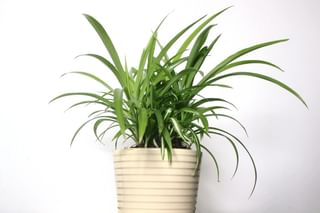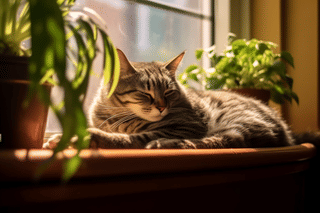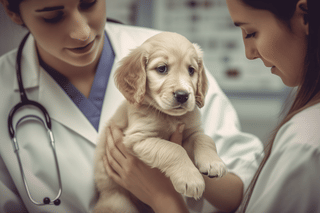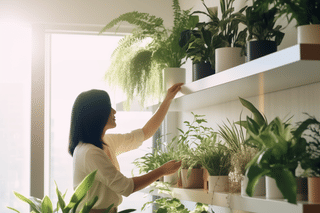Keep Your Pets Safe: Comprehensive Guide to Plant Toxicity
Learn about plant toxicity symptoms, impacts on different pets, and important safety measures. Get tips on providing a safe and healthy home environment for your pets.
Key learnings from this plant care guide
- Not all plants are pet-friendly and can be toxic to your pets, so it's important to be educated about plant toxicity to make informed decisions about the plants you choose for your home.
- Common symptoms of plant toxicity in pets include vomiting, diarrhea, drooling, loss of appetite, and mouth irritation, and seeking veterinary attention is crucial if these symptoms are observed after plant ingestion.
- Different plants can have varying levels of toxicity for different pets, so it's important to understand which plants pose a higher risk for your specific pet species and size.
- In case of plant ingestion, it's important to take immediate action by removing any remaining plant matter, contacting a vet or pet poison helpline, and following their instructions, while also taking preventative measures and creating a pet-friendly environment to avoid plant ingestion incidents in the future.
Pets, plants, and people often share a living space. It's amazing, but there's one thing you should know: not every plant is pet-friendly. Yes, some can be toxic to your pets. This toxicity may cause health issues, some mild, others severe, putting your furry friends at risk.
So, why talk about it? Knowledge about plant toxicity is very important for pet owners. It helps you make informed decisions about the plants you choose for your home. Your pets are clueless about which plants are safe and which are potentially dangerous, but as a responsible pet owner, this is where you step in.
In this plant care guide about plant toxicity and pets, we're going to look at these topics:
So let's create a safer, healthier, and happier home environment for your adorable pets!
Basics of Plant Toxicity
Plant toxicity is when certain plants can be harmful to animals if they are eaten or touched. Not all plants are toxic, but some plants have certain chemicals or compounds that can cause harmful effects for your pets.
Different plants contain a wide range of toxins. Some may only cause a slight upset stomach, while others can have more severe effects like kidney failure or even be fatal. It's important to be aware of these risks and take precautions when dealing with potentially harmful plants.
Common Symptoms of Plant Toxicity in Pets
Pet owners should be aware of the signs of possible plant toxicity. The symptoms can vary based on the type of plant and the quantity ingested, but common signs to look out for include:
- Vomiting or diarrhea
- Excessive drooling or salivation
- Loss of appetite
- Difficulty swallowing
- Irritation of the mouth or lips
If you notice any of these symptoms in your pet, especially after they've been munching on a houseplant, it's crucial to quickly seek veterinary attention.
The Impact and Effects of Plant Toxicities on Different Pets
Certain plants can be more toxic to pets than others. For instance, a plant that is safe for dogs might be extremely dangerous for cats, and vice versa. This is because each species has different metabolism and digestive systems.
Another important factor is the size and health of the pet, as it can determine how severely they are affected by a toxic plant. While a larger dog may only experience mild symptoms after consuming a toxic plant, a smaller puppy or cat could become seriously ill.
The most crucial thing is for pet owners to educate themselves. It's important to be aware of which plants in your garden or home could potentially harm your pet and to take prompt action if your pet shows signs of being unwell.
Plant Toxicity in Specific Pets
To effectively prevent and treat plant toxicity in our beloved dogs and cats, it's crucial to understand how it varies among different plants. In this chapter, we explore the specific characteristics of plant toxicity in dogs and cats, providing valuable insights for pet owners like you.
Plant Toxicity in Dogs
Many houseplants can be harmful to dogs. Some examples include Oleander, Sago Palm, Lily of the Valley, Azaleas, and Cyclamen. These plants contain toxins that can cause various symptoms in dogs. Typically, these symptoms appear a few hours after ingestion and may include a rapid heartbeat, drooling, vomiting, diarrhea, lethargy, and loss of coordination.
It's important to note that it's not just ingestion that can be problematic. Simply touching certain harmful plants, like Dieffenbachia, can result in itching, redness, and swelling. So, it's crucial to be aware of the potential risks and keep these plants away from your furry friends.
Plant Toxicity in Cats
Just like dogs, cats also have a list of plants that they should avoid. Lilies, in particular, are extremely toxic to cats and can cause severe kidney damage. Other harmful plants for cats include Daffodils, Tulips, Hyacinths, and some types of Ivy.
When cats are exposed to toxic plants, the signs are similar to those in dogs. However, cats may become more agitated and may excessively groom or paw at their mouth due to oral irritation.
Remember, while these signs are common, each pet and plant may have different reactions. If you're unsure, it's important to seek immediate veterinary attention. Most importantly, preventing exposure to toxic plants is the best way to keep your pet safe. Make sure your living environment is pet-friendly as the first line of defense against plant toxicity.
Important safety measures to take

When to Consult a Vet in Case of Plant Ingestion by a Pet
If you think your pet has eaten a potentially toxic plant, it's important to consult with a vet right away, no matter how small the ingestion may seem. Some reactions can be mild, but others can quickly become serious health issues.
Your vet will check the exposure, predict the likely impact, and provide advice on the best treatment. Don't hesitate to reach out for professional help to ensure your pet's well-being.
Emergency Symptoms to Watch Out For
While we have already discussed typical signs of plant toxicity, it's important to note that there are additional severe symptoms that could happen. These can include seizures, unresponsiveness, difficulty breathing, and irregular heartbeat. If you observe any of these symptoms, it is important to take quick action and call your veterinarian.
Recommendations on Pet Poison Helpline Contacts
It's incredibly important to have the contact information of pet poison helpline services readily available in case of emergencies. These helplines can offer quick help and advice and guide you on the first steps to take before you can bring your pet to a veterinarian.
Remember, while these services can provide invaluable support, they are not a substitute for professional veterinary care. Regular vet visits and preventative measures are still vital for the well-being of your pet.
Dealing with Pet Ingestion of Poisonous Plants
Sometimes pets accidentally eat harmful plants, even if we try our best to prevent it. In this section, we'll look at the steps to follow in case this happens and how to take care of your pet afterward.
Immediate Steps to Take if a Pet Ingests a Poisonous Plant
Here's what you should do if your pet ingests a potentially toxic plant. Print these steps or take a screenshot to always have them nearby:
- Remove any remaining plant matter from your pet's mouth.
- Identify the ingested plant. If possible, take a photo or sample for identification.
- Contact your vet or a pet poison helpline immediately. Provide details about your pet and the ingested plant.
- Follow your vet's instructions. Do not induce vomiting unless you're told to do so.
- Monitor your pet's behavior and symptoms closely until they get professional help.
Remember, every moment counts in these situations. Quick action can greatly improve your pet's health and recovery.
Tips for Taking care of your Pet After Ingestion
After your pet has received veterinary care, they may need extra support and observation at home. It's important to follow your vet's recovery plan, which could involve giving prescribed medications, making dietary adjustments, or scheduling follow-up appointments for further check-ups.
During the recovery period, keep a close eye on your pet and let your vet know if you notice any changes or worrying behavior. Also, make sure to remove or keep toxic plants out of your pet's reach to prevent any similar incidents from happening again.
Taking care of a pet that is recovering from plant poisoning requires patience and dedication. If you have any further questions or concerns, don't hesitate to reach out to your vet. They are there to help you and your pet!
Preventing Plant Ingestion
Preventing plant toxicity in pets is important for their well-being. You can create a safe environment and look at your pet's behavior to keep them away from toxic plants. Let's look at a few simple steps to take to keep your pets safe around your plants.
Discouraging Pets from Munching on Houseplants
Pets, including cats and puppies, like to explore by biting on things. It may seem adorable, but this behavior can be dangerous if they eat a toxic plant. Here are some simple strategies to prevent this:
- Provide Pet-Safe Plants for Chewing: By getting safe plants or grasses for pets to chew on, you can redirect their biting behavior away from toxic plants.
- Training: Training your pets to stay away from plants can be effective over time. You can have success with consistent commands and gentle corrections.
- Use Safe Deterrents: Certain safe, natural deterrents, like bitter apple spray, can make plants less appealing by giving them an off-putting taste.
- Restrict Access to Plants: Placing plants out of reach or in rooms where pets don't go can prevent unwanted contact. This is a little more difficult with cats, as they're pro-climbers.
Sometimes you can't place plants out of reach, so you have to get a little more creative. Let's look at a few ways to safely show off your plants at your home without having to worry about your pets.
Safe Ways to Arrange and Display Plants at Home
To create a pet-friendly environment at home, it's important to carefully organize your plants. This helps reduce the risk of plant toxicity to your pets. Keep potentially harmful plants out of their reach by placing them on high shelves or using hanging planters. Or even better, pick pet-safe plants.
Plant stands are another great tool. By using these, you'll make it harder for pets to knock over or dig into potted plants. You can also use closed terrariums or clear, pet-proof covers to protect your plants.
Pet-friendly Plants

- Spider plant: Famous for its air-purifying qualities and ease of maintenance.
- Areca Palm: Known for its lush, non-toxic leaves and air-humidifying properties.
- Boston Fern: Noted for its lovely foliage and purifying capabilities.
- Swedish Ivy: An attractive, hanging plant perfect for high, unreachable places.
- Bromeliads: A vibrant, flowering plant, safe for pets.
- Christmas cactus: Despite the 'cactus' label, it's non-toxic and pet-safe.
- Maranta Prayer Plant: Safe for all pets and known for its attractive leaf patterns.
But these are not the only pet-friendly plants you can bring to your house. For a complete list of all pet-friendly plants I've written about, have a look at Pet-friendly houseplants.
Thank you for reading this post! I hope it helps you to keep your plants healthy and beautiful! If you're looking for more guides on specific plants, you can always request a plant guide to get a guide for the plant you have trouble with.
Test your plant care knowledge
Quiz completed!
Want to learn more? Sign up for my newsletter to receive free tips in your inbox!
Sign up now!












